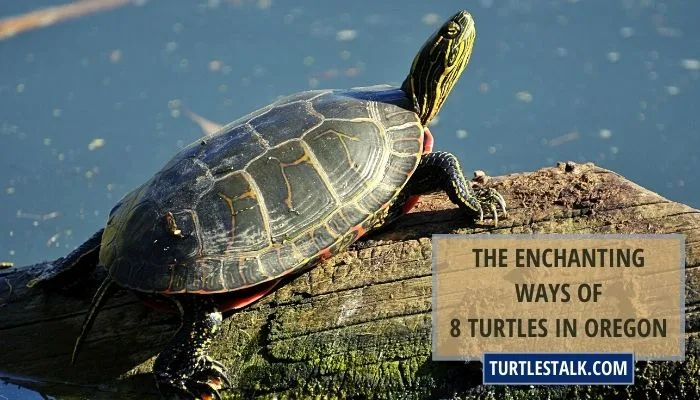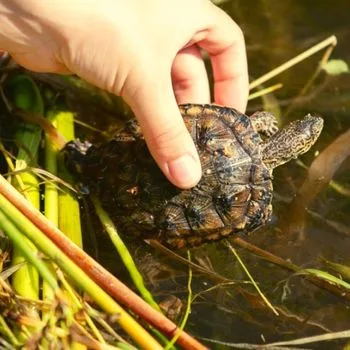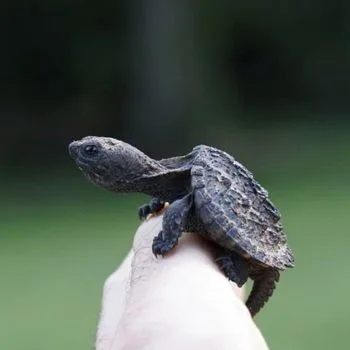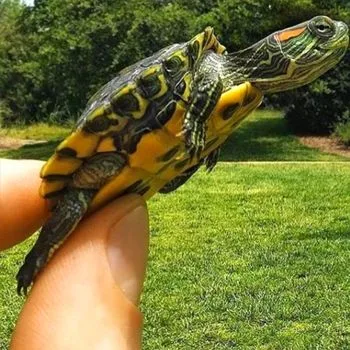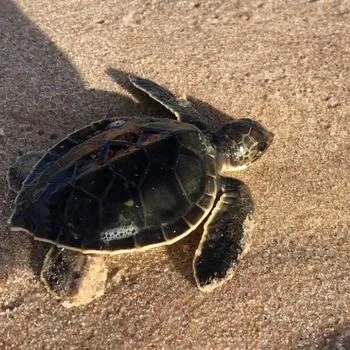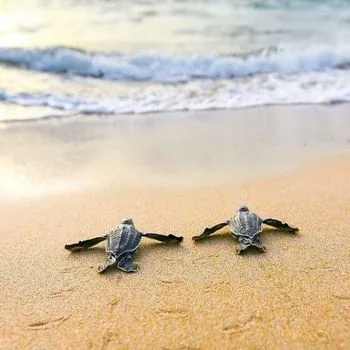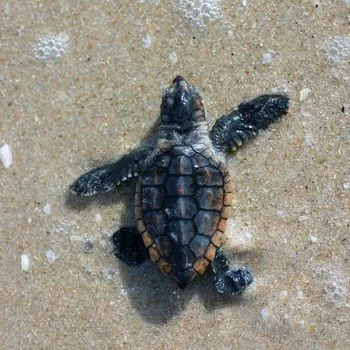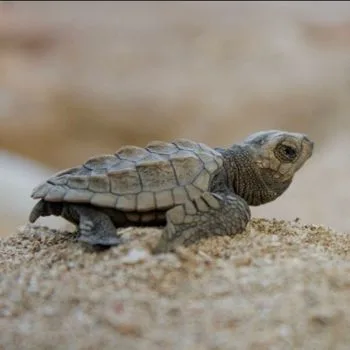The Enchanting Ways of 8 Turtles in Oregon
Oregon is a state that loves its wildlife, and turtles are no exception. Two of the most beloved species in Oregon are the Western Pond Turtle and the Western Painted Turtle – both native to this beautiful region.
If you’re looking for some fun facts about these incredible creatures, then look no further! This article will provide an overview of what makes them so special and why they call Oregon home. We’ll explore their unique characteristics, behaviors, habitats and more! So come along on this journey with us as we discover all the eight turtles of Oregon!
| # | Name | Details | Image |
| 1 | Western Pond Turtle (Actinemys Marmorata) |
| 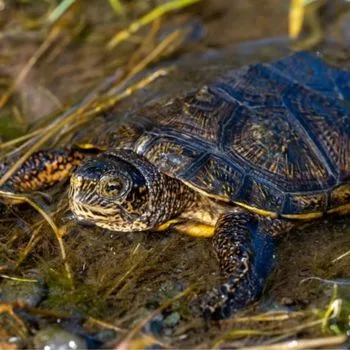 |
| 2 | Western Painted Turtle |
| 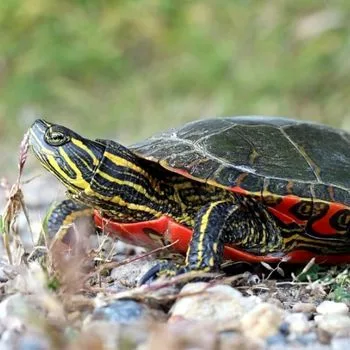 |
| 3 | Common Snapping Turtle (Chelydra serpentina) |
| 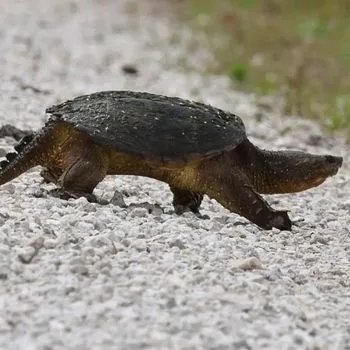 |
| 4 | Red Eared Slider (Trachemys Scripta Elegans) |
| 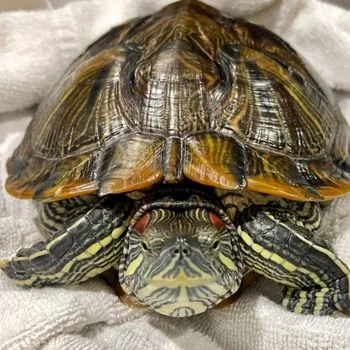 |
| 5 | Green Sea Turtle (Chelonia Mydas) |
| 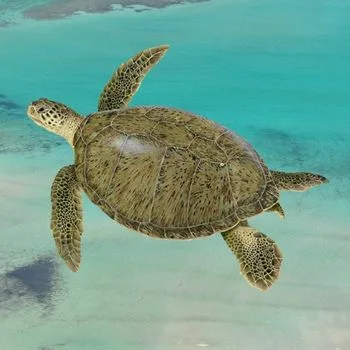 |
| 6 | Leatherback Sea Turtle (Dermochelys Coriacea) |
|  |
| 7 | Loggerhead Sea Turtle (Caretta Caretta) |
| 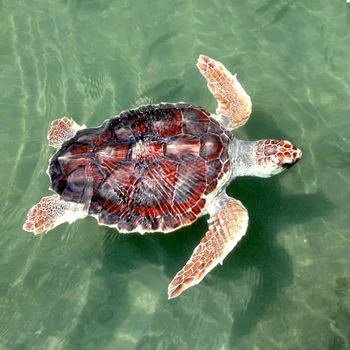 |
| 8 | Olive Ridley Sea Turtle (Lepidochelys Olivacea) |
| 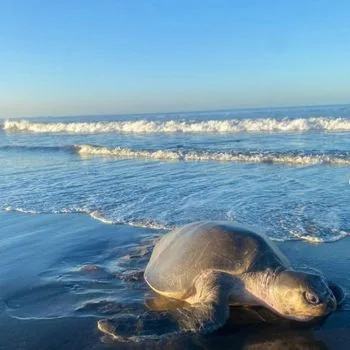 |
8 Turtles You Can Find in Oregon
In total, there are 8 species of turtles in the state of Oregon. This guide will take you on an exploration through each turtle type and provide tips for providing them with proper care. So, let’s get started on our journey into discovering all the wonders that these reptiles have to offer!
1. Western Pond Turtle (Actinemys Marmorata)
- Family: Emydidae
- Genus: Actinemys
- Type: Semi-aquatic turtle
- Natural Habitat: Lakes, ponds, rivers
- Lifespan: 80 years in captivity
- Maximum Size: 5 – 8 inches
- Maximum Weight: 10 – 20 pounds
- Prone to Diseases: Respiratory diseases, metabolic bone issues
- Disease Carrier: Salmonella
- Aggression Level: Not aggressive
- Predators: Weasels, raccoons, otters, ospreys, bullfrogs, crayfish, opposums and coyotes
- Domestication: Can be kept as pet
The Western Pond Turtle (Actinemys marmorata) is a magnificent creature native to North America, found in the west of the United States, including Oregon. These semi-aquatic turtles have a unique patterned shell up to 8 inches long and can live up to 80 years when kept as pets. With webbed feet for swimming and its streamlined shape, they are well adapted to their watery habitats such as ponds, rivers or lakes surrounded by aquatic plants.
Western Pond Turtles primarily prey on insects or small fishes while also serving as potential food themselves for predators like weasels, raccoons, otters or ospreys.
Unfortunately, their population has been reduced significantly over time resulting in them being listed as species of concern in some states and threatened in others. A sacred animal worthy of our respect – you may be lucky enough still observe these creatures around California and Oregon if you keep an eye out!
2. Western Painted Turtle
- Family: Emydidae
- Genus: Chrysemys
- Type: Aquatic turtle
- Natural Habitat: Likes bodies of water with soft mud floors and abundant aquatic plants, e.g. rivers, lakes, wetlands, oxbows, ponds, ditches, and reservoirs.
- Lifespan: Usually 20 – 30 years, but in better habitat can live up to 50 years
- Maximum Size: 4 – 6 inches
- Maximum Weight: Gets about 1 pound
- Prone to Diseases: Vitamin deficiencies, metabolic bone disease, and intestinal parasites
- Disease Carrier: Salmonella
- Aggression Level: Aggressive baskers
- Predators: Raccoons, skunks, foxes, herons, other birds, snakes, and large predaceous fish
- Domestication: Can be kept as pets
The Western Painted Turtle, scientifically known as Chrysemys picta bellii, is an aquatic creature native to North America. It can be found in states such as Oregon; making its way up right into British Columbia in Canada. Adults typically measure between 9-10 inches in length while juveniles/hatchlings are smaller at around 2-3 inches.
They live in freshwater habitats such as ponds, rivers and lakes where they swim with ease due to their long tails and streamlined shells of webbed feet. Although usually not aggressive creatures, they have predators that include raccoons and herons among others which make them a species of special concern in some regions.
In most US states it is legal to keep Western Painted Turtles as pets with proper care but one should always check local regulations for necessary requirements first.
3. Common Snapping Turtle (Chelydra serpentina)
- Family: Chelydridae
- Genus: Chelydra
- Type: Freshwater turtle
- Natural Habitat: Freshwater habitats such as lakes, rivers, and swamps
- Lifespan: 50 years
- Maximum Size: 19 inches
- Maximum Weight: 40 pounds
- Prone to Diseases: Fungal infections and shell rot
- Aggression Level: Not aggressive until provoked
- Predators: River otters, bears and coyotes
- Domestication: Not recommended as pets
The Common Snapping Turtle, scientifically known as Chelydra serpentina, is an aquatic species native to freshwater habitats such as lakes, rivers and swamps. These turtles are highly adaptable and can live up to 50 years in the wild.
Adult Common Snapping Turtles typically measure 10-16 inches in shell length but can grow up to 19 inches and weigh around 40 pounds. They have a powerful bite with an estimated pressure of over 600 psi, making them one of the strongest biters among reptiles. Despite their strength they are generally not aggressive animals, though it is best to not provoke them and take caution around them.
Common Snapping Turtles often face threats from predators such as river otters, bears and coyotes when living out in the wild.
Unfortunately, their habitat is also threatened by human activities such as development and pollution which can lead to a decrease in population numbers if conservation efforts are not taken soon here in Oregon.
Although they make fascinating pets due to their long lifespan of up to 50 years when cared for properly, some states have regulations or restrictions on owning them so check with local authorities before acquiring this species as a pet.
These turtles have webbed feet for swimming and a long tail for propulsion allowing them to move quickly through water which also makes them difficult prey for predators.
Furthermore, although they occupy multiple states across North America from Alabama to Wyoming there is no other name than the Common Snapping Turtle so it’s easy to identify.
It should be noted that this species does not carry any significant disease that can be transmitted to humans yet they may still be prone to diseases like fungal infections or shell rot when kept in unsanitary conditions so proper care must be taken here in Oregon when considering owning one of these remarkable creatures as a pet.
4. Red Eared Slider (Trachemys Scripta Elegans)
- Family: Emydidae
- Genus: Trachemys
- Type: Aquatic turtle
- Natural Habitat: Streams, rivers, ponds, lakes, swamps, and marshes
- Lifespan: 20 – 30 years
- Also Known As: Red-eared terrapin
- Maximum Size: 7 – 12 inches, females get larger than 12 inches
- Maximum Weight: 3 – 6 pounds
- Prone to Diseases: Respiratory infections, shell rot, and other diseases if kept in unsanitary conditions.
- Disease Carrier: Salmonella
- Aggression Level: Not aggressive
- Predators: Raccoons, otters, fish, frogs, snakes, skunks and birds
- Domestication: Can be kept as pets
The Red Eared Slider (Trachemys scripta elegans) is a freshwater reptile with a striking appearance. Found in Oregon’s waterways, these turtles can reach up to 10-12 inches long as adults and can live for an impressive 30 years. They have webbed feet that are adapted for swimming, making them incredibly agile aquatic creatures.
Males and females exhibit different size ranges, with males being more diminutive compared to the females and juveniles measuring only 2-3 inches when fully grown. Although they may take on aggressive postures if threatened, their bite force is not enough to cause any damage to humans or other larger animals.
It’s important that we respect the habitats of these amazing reptiles so that future generations will be able to enjoy them too – keep their environments clean by disposing of garbage properly and avoid disturbing the fragile ecosystems where they make their homes!
5. Green Sea Turtle (Chelonia Mydas)
- Family: Cheloniidae
- Genus: Chelonia
- Type: Marine turtle
- Natural Habitat: Coastal waters, bays, lagoons, and shallow seagrass beds in tropical and subtropical oceans
- Lifespan: 80 years
- Also Known As: Green turtle
- Maximum Size: 5 feet
- Maximum Weight: 400 pounds
- Aggression Level: Low
- Predators: Birds, mammals, and large fish
- Domestication: Not suitable as pets
Introducing the majestic Green Sea Turtle, an incredible species that inhabits tropical and subtropical coastal oceans in many parts of the world. These residents of Oregon can reaching up to five feet in length and weigh around 400 pounds for females.
This marine turtle can live for about 80 years if left undisturbed by humans or predators such as birds, mammals, or large fish.
With flippers adapted for swimming and a streamlined body shape allowing it to hold its breath underwater for long periods at a time, they are highly adapted to navigating in their natural aquatic habitats.
Sadly enough though these creatures are endangered worldwide due to human actions which puts them at risk of extinction unless preventative steps are taken soon. Let’s strive towards preserving its population so future generations can witness Oregon’s coastlines come alive with the beauty of these magnificent animals!
6. Leatherback Sea Turtle (Dermochelys Coriacea)
- Family: Dermochelyidae
- Genus: Dermochelys
- Type: Marine turtle
- Natural Habitat: Open ocean and near-shore habitats in warmer regions
- Lifespan: 45 years
- Maximum Size: 6.7 feet
- Maximum Weight: 2,000 pounds
- Aggression Level: Low
- Predators: Birds and other marine animals
- Domestication: Not a pet
The Leatherback Sea Turtle (Dermochelys Coriacea) is one of the most remarkable creatures you can find in the depths of ocean. This majestic creature, also known as simply Leatherback Turtle, has adapted to life at sea by having a streamlined body and flippers that give it an immense advantage for swimming long distances.
It has been known to reach up to 6.7 feet in length and its size can weigh up to 2,000 pounds; thus making this resident of Oregon one of the largest reptiles on Earth!
This species lives mainly in open ocean habitats with warmer regions such as those around the coasts of California, Florida or Mexico but sometimes ventures near-shore areas looking for food or breeding grounds.
Unfortunately due to human activities like hunting them for their valuable shells or accidental catches while fishing these animals have been classified as endangered (IUCN Red List). We must therefore work together now and take action if we want this species preserved so future generations can enjoy its beauty here in Oregon.
7. Loggerhead Sea Turtle (Caretta Caretta)
- Family: Cheloniidae
- Genus: Caretta
- Type: Sea turtle
- Natural Habitat: Coastal waters, bays, and estuaries
- Lifespan: 40-50 years
- Maximum Size: 3-3.5 ft
- Maximum Weight: 220-355 pounds
- Prone to Diseases: Fibropapillomatosis and debilitative shell disease
- Aggression Level: Not typically aggressive
- Predators: Juveniles – birds, crabs, and mammals; adults – large marine animals such as sharks
- Domestication: Cannot be kept as pets
The Loggerhead Sea Turtle (Caretta caretta) is a remarkable species found in the coastal waters, bays, and estuaries of the Atlantic and Pacific coasts of the United States, as well as in the Gulf of Mexico. This semi-aquatic creature that roams our state of Oregon has a unique adaptation – its carapace (top shell) is patterned like the skin of a shark, allowing it to blend perfectly with its environment. A fully grown adult can reach up to 3-3.5 ft in length and weigh up to 400 pounds, though there is virtually no size difference between males and females.
Loggerhead Sea Turtles are highly adapted to their aquatic lifestyle, with webbed feet for navigation and long claws for catching their prey such as insects, snails or fish. They can also hold their breath for extended periods of time and have a specialized streamlined body shape which helps reduce drag while swimming.
Unfortunately, due to destruction of its wetland habitats and other human activities, population declines have been reported in some areas; therefore this species is classified as vulnerable by the IUCN and protected under the Endangered Species Act. So it is important that local authorities be consulted before owning one as they cannot be kept as pets due to their specialized habitat requirements.
Living up to 40-50 years in the wild these gentle creatures rarely show aggression towards humans but should still be respected with caution since they are vulnerable to predation from marine mammals such as sharks or birds and crabs when young.
8. Olive Ridley Sea Turtle (Lepidochelys Olivacea)
- Family: Cheloniidae
- Genus: Lepidochelys
- Type: Sea turtle
- Natural Habitat: Oceanic and coastal waters, nesting on tropical and subtropical beaches
- Lifespan: Can live up to 50 years
- Also Known As: Pacific ridley sea turtle
- Maximum Size: 24 – 30 inches
- Maximum Weight: 80 – 110 pounds
- Prone to Diseases: Fibropapi-llomatosis
- Aggression Level: Not aggressive
- Predators: Hatchlings perish before reaching the ocean, preyed by snakes, and birds, among others. adults are often eaten by sharks.
- Domestication: No, listed as endangered
Have you ever heard of the Olive Ridley Sea Turtle (Lepidochelys Olivacea)? This majestic sea turtle lives in oceanic and coastal waters, often nesting on tropical and subtropical beaches.
Adults average 70-100 cm in length and weigh around 45-50 kg, with adult males weighing around 45-75kg (100-165 lbs) and adult females ranging from 68-100kg (150-220lbs).
Are you wondering if it’s illegal to keep one as a pet in Oregon? Unfortunately yes – it is illegal to keep sea turtles as pets without proper permits or licenses in the United States. Nevertheless, these adapted aquatic creatures are worth admiring for their hydrodynamic shell, powerful flippers, streamlined body shape, and they can live up to 50 to 60 years!
Although endangered by human activities such as pollution and hunting eggs/hatchlings they still remain across Pacific, Atlantic & Indian Oceans.
Final Words
In the state of Oregon—a place rich in biodiversity—turtles play a significant role; with a variety of species dwelling in its forests, beaches, and rivers.
In this article, we took a closer look at these fascinating creatures (including their natural habitats, lifespan, size and weight, predators, and domesticability). It’s worth noting that, while keeping these turtles as pets is legal; their populations in Oregon may be declining due to habitat loss and collection for the pet trade.
It is our responsibility to ensure that these turtles remain protected and preserved for future generations to enjoy in the state of Oregon.
Other Nearby States:

